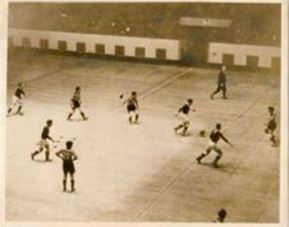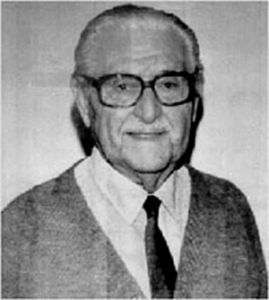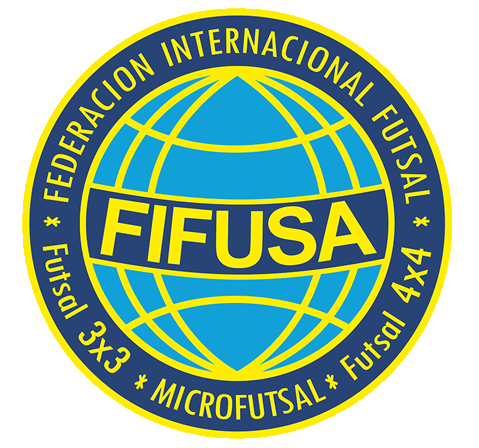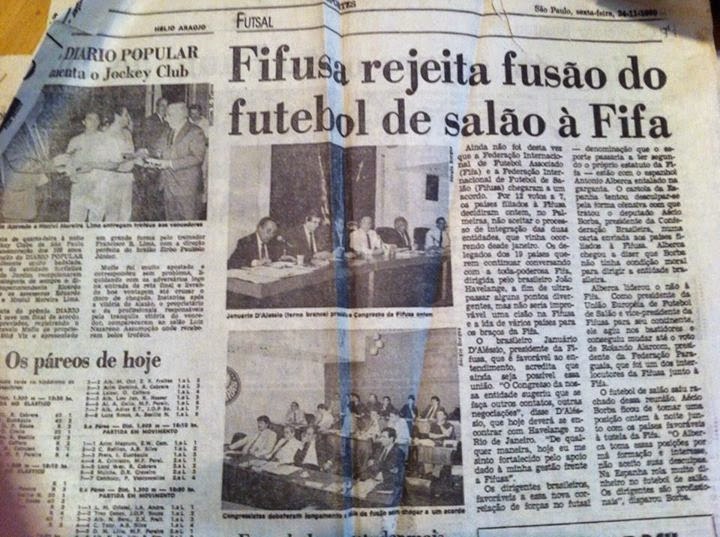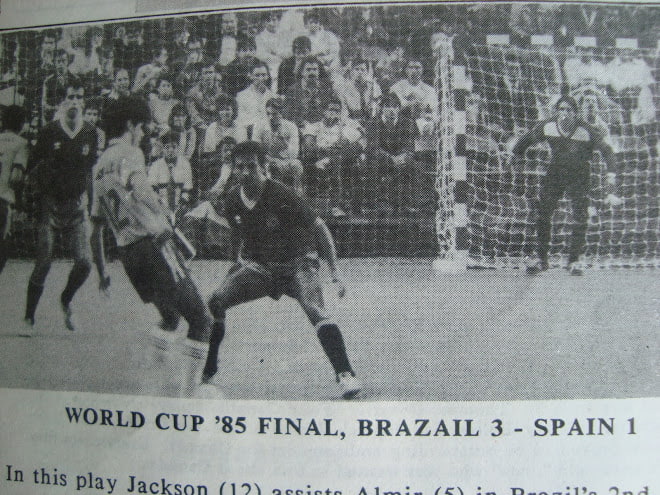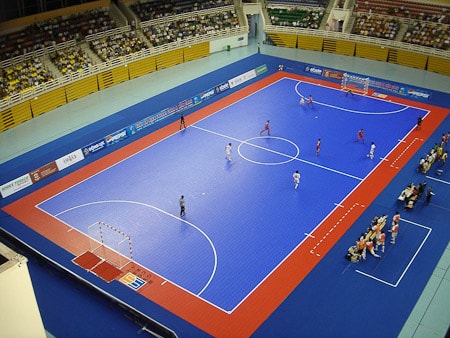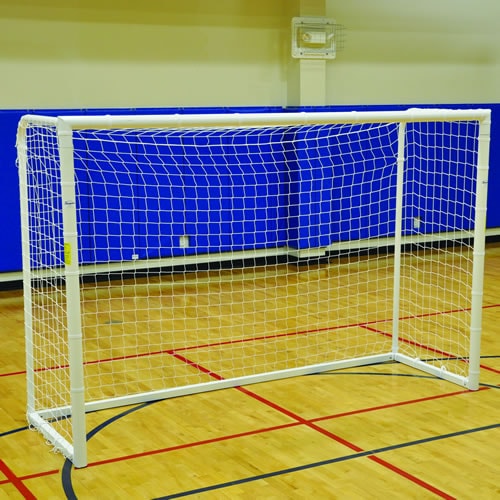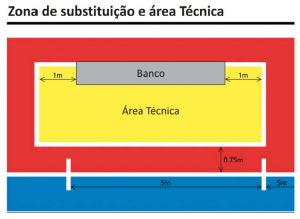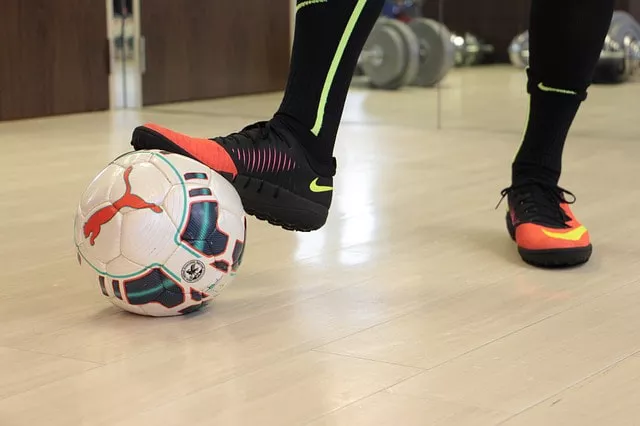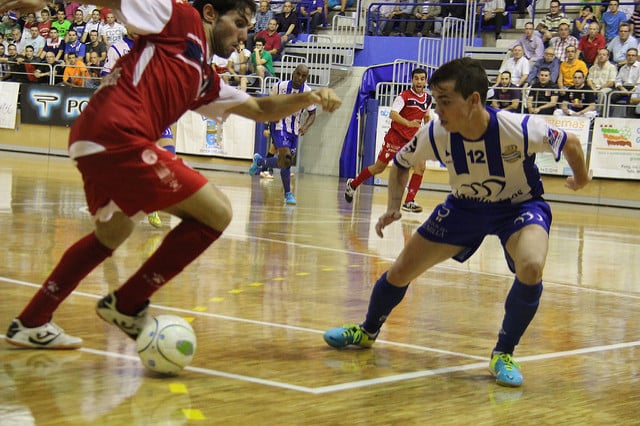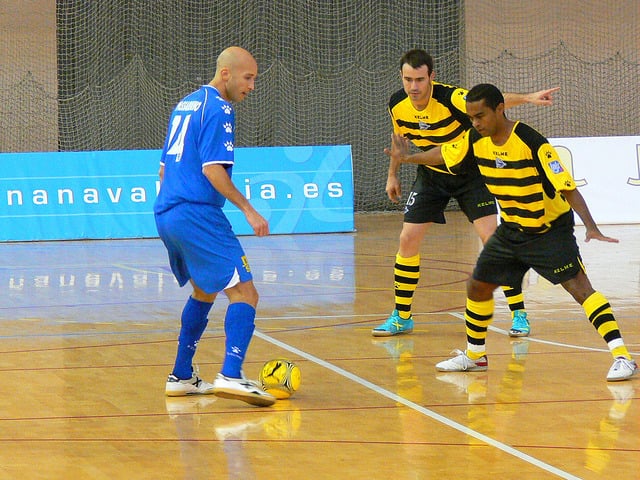Introduction: Futsal: History, Rules and Skills
In this super complete post on Futsal: History, Rules and Skills you will find a precious, quality and definitive content about the History of Futsal in Brazil and in the World, the updated Futsal Basic Regras and the Technical Foundations of Futsal.
The Origins: Where and how was Futsal invented?
There are two divergent versions about the origins of Futsal (Indoor Football). One of the versions is that Futsal started being played in the city of São Paulo / Brazil, in the Christian Youth Association (ACM), in the 1940s, because at that time it was already hard to find free Football fields to play the sport. The solution was to use the Basketball and Hockey courts in order to play Football.
Where was Futsal invented?
The most accepted version of the origins of Futsal is that it began in Uruguay as it started being played in the 1930s in Montevideo, also at the Christian Youth Association.
Who invented Futsal?
Uruguayan Physical Education teacher Juan Carlos Ceriani is considered the creator of Futsal, who used the term “Indoor-Football” to designate the new sport.
Some facts about the origins of Futsal
The ball was one of the first adjustments that Futsal had to get done regarding Football. The ball used in the football field was big and very bouncy; a smaller and heavier ball was necessary, in order to be used at an indoor field. That is what was done and Futsal has come to be known as the “heavy ball sport”.
Another adjustment was related to the number of players on each Futsal team, since the 11 players of Football did not fit the court. Several formations were tried, until they reached the number of 5 players per team.
The History of Futsal in the World
In September 1969 in Asunción/Paraguay was founded the South American Confederation of Indoor Football, with the presence of representatives of Futsal / Brazil’s Indoor Football.
In July of 1971 in São Paulo/Brazil, with representatives of Brazil, Argentina, Paraguay, Uruguay, Bolivia, Peru and Portugal was founded the FIFUSA – International Federation of Indoor Football.
First International Futsal Competitions
In 1980, the first Futsal Pan American Championship was held in Mexico, with the participation of Brazil, Mexico, Paraguay, Uruguay, Argentina, Bolivia and the United States. Brazil was the winner of this competition.
In 1982, FIFUSA held the first Futsal World Championship, in São Paulo / Brazil. Brazil was the first Futsal world champion; the tournament was attended by Brazil, Paraguay, Argentina, Costa Rica, Czechoslovakia, Colombia, Uruguay, Mexico, Italy, the Netherlands and Japan.
In 1985, the second Futsal World Championship was held in Spain, won by Brazil once again. In 1988 the third Futsal World Championship was held in Australia and won by Paraguay.
FIFA takes control of Futsal
In 1989 FIFA – International Football Federation – has decided to get in the dispute for the control of Indoor Football, creating new rules and changing the name to FUTSAL. In the same year, they held the first FIFA Futsal World Cup in the Netherlands. Bradesco’s Brazilian team was authorized by CBFS to participate in the competition and became the champion of the first FIFA Futsal World Cup.
Brazil in worldwide Futsal
An important moment in history was when Brazil, the greatest strength of Futsal in the world, was officially unaffiliated with FIFUSA, joining FIFA and FUTSAL. Undoubtedly one of the most important moments in Futsal history in the world.
See also ⇒ The History of Football
FIFUSA World Champions
- 1982 – Brazil
- 1985 – Brazil
- 1988 – Paraguay
Futsal World Cups
From 1992, FUTSAL World Cups were organized by FIFA and started being held every 4 years.
The champions of the FIFA Futsal World Cup are:
- 1989 – Brazil
- 1992 – Brazil
- 1996 – Brazil
- 2000 – Spain
- 2004 – Spain
- 2008 – Brazil
- 2012 – Brazil
- 2016 – Argentina
01) What are the Futsal court dimensions?
The Futsal court is a rectangle and its dimensions are as follows:
- FIFA international competitions: 38 to 42 meters long and 20 to 25 meters wide.
- Adult National competitions (Brazil) and under-20: minimum of 38 meters in length and a minimum of 18 meters in width.
- Women’s Adult National competitions, U-20, U-17 and U-15 and Men’s National competitions U-17 and U-15 the minimum length is 36 meters and the minimum width is 18 meters.
02) What size are the Futsal goal posts?
The size of goal posts are 3 meters wide between the posts, and the height of the crossbar is 2 meters from the ground.
03) Futsal Substitutions and Substitution Zone
Futsal substitutions are unlimited during the match. However, there is an area where the substitution will take place in Futsal, which is located in front of each bench / technical area, with 5 meters wide.
04) A Futsal Team is formed by how many players?
A Futsal team consists of 5 players, and one of them is the goalkeeper. In official competitions, the maximum number of substitute players is 9. Substitutions in Futsal are unlimited. Substitutions may occur while the ball is in play or out of play, if they occur in the SUBSTITUTION ZONE.
05) What is the duration of a Futsal match?
A Futsal game is timed and divided into two equal periods. For adult, u-20 and u-17 matches, there will be two 20-minute periods, whereas for u-15 matches, it will consist of two 15-minute periods. The half- time interval must not exceed 15 minutes.
06) Futsal Goalkeeper Fouls
In Futsal, the goalkeeper is not allowed to possess the ball for over 4 seconds, with his feet or hands, in his defense zone. On the attack zone, the goalkeeper can touch the ball freely and for as long as he wants as an outfield player.
It is allowed only one pass-back to the goalkeeper; the goalkeeper may not receive a pass-back using his hands. After a pass-back, the goalkeeper may only receive the ball in his defense zone if an opponent touches it.
07) Red Card / Sending-off in Futsal:
- The team that has a player sent off, will remain with one less player for 2 minutes or until suffering a goal.
- If both teams have players sent off and have the same number of players in court, the teams will only be reset after 2 minutes.
- If both teams have players sent off, but one of the teams is numerically inferior because they have had more players sent off, the team in numerical inferiority can have the return of a player after suffering a goal. Ex.: Team A had two players sent off, team B had 1 player sent off; if team A, who is in numerical inferiority, concedes a goal in less than 2 minutes after the sending off, team A could have a player returned.
08) Kick-in in Futsal
The kick-in in Futsal is taken with feet, the ball must be placed on the touchline or outside but not more than 25cm away from the court; the player who takes the kick-in cannot have their feet inside the field of play. The kick-in must be taken within 4 seconds. It is not allowed to score directly from a kick-in
09) Goal clearance in Futsal
Goal clearance in Futsal must be exclusively taken by the goalkeeper, by using their hands, and it must leave the penalty area within 4 seconds.
10) The Corner Kick in Futsal
The corner kick in Futsal must be taken with feet within 4 seconds and the ball must be placed in the corner area.
What are Futsal Skills?
Futsal Skills are the techniques used during a Futsal match. Pass, kick and head are examples of Futsal Skills.
Which are the Futsal Skills?
Here are some futsal skills: ball trapping / reception, ball control, ball carrying, the pass, the kick, the head, the dribble and the feint. Please find below a summary of the main Futsal skills.
Ball Control Skill on Futsal
Ball Control in Futsal differs from the ball trapping because it refers to the act of keeping the ball under control without letting it fall to the ground. This skill is also popularly known as kick-ups.
Ball Reception / Trapping Skill
It is the act of receiving the ball in the Futsal. The trapping can be performed with any part of the body eligible by the Futsal Rules, such as feet, thigh, chest, head, among other parts. The main and most indicated technique for receiving / trapping the ball in Futsal is the “stepping”, which is when the Futsal player dominates the ball by stepping on it with the sole of the foot.
Ball Carrying Skill on Futsal
Ball Carrying is the act of carrying the ball on your possession through the pitch. It is possible to carry the ball in a straight line or changing direction (zigzag). Carrying can be performed by using the front of the foot, the instep or by stepping on the ball, the so-called “roll”. It is very important that the Carrying is performed with the ball always very close to the player’s feet.
Ball Pass Skill on Futsal
The ball Pass on Futsal is the act of sending the ball to a teammate. The Pass can be performed with any part of the body eligible by the Futsal Rules, such as the feet, thigh, chest, head, heel. The most used passing skill is performed by touching the ball with the inside of the foot, the so-called pass lead.
Kick or shooting skill on Futsal
The Kick on Futsal is the act of sending the ball towards the goal / goal of the opposing team with the intention of scoring a goal. The Kick can be performed with any part of the body allowed by the Rules of the Futsal; kick with the inside of the foot (lead), with the instep, back heel, thigh, and head. The best Kick is the one that unites precision and strength.
Head Skill on Futsal
It is the act of heading the ball. Heading in Futsal can be used defensively, to stop an opponent’s attack, to pass or in the form of a Kick / Finish, in order to score a goal. The most used Head Skill on Futsal is performed by using the forehead area.
Dribble Skill on Futsal
Dribbling on Futsal involves two other skills: Trapping and Carrying. Dribbling is the act of passing through a defender by trapping and carrying the ball. Dribbling requires change of direction, creativity, speed and agility, with the intention of deceiving the opponent and passing through it.
Body Dribbling in Futsal
The Body Dribbing in Futsal is different from the Dribble because it is performed without trapping the ball, and it is also known as Body Dribble / Body Feint. The Body dribbling is a creative skill, with a change of direction, not using the ball, performed in order to deceive the opponent, aiming to reach or receive the ball.
